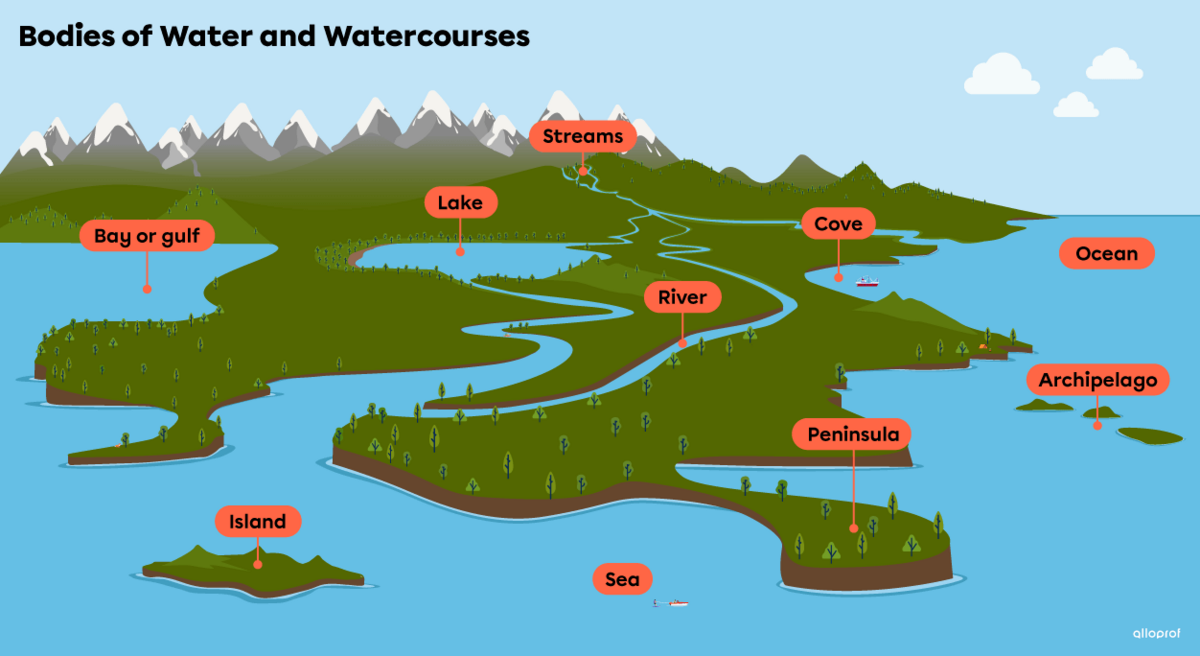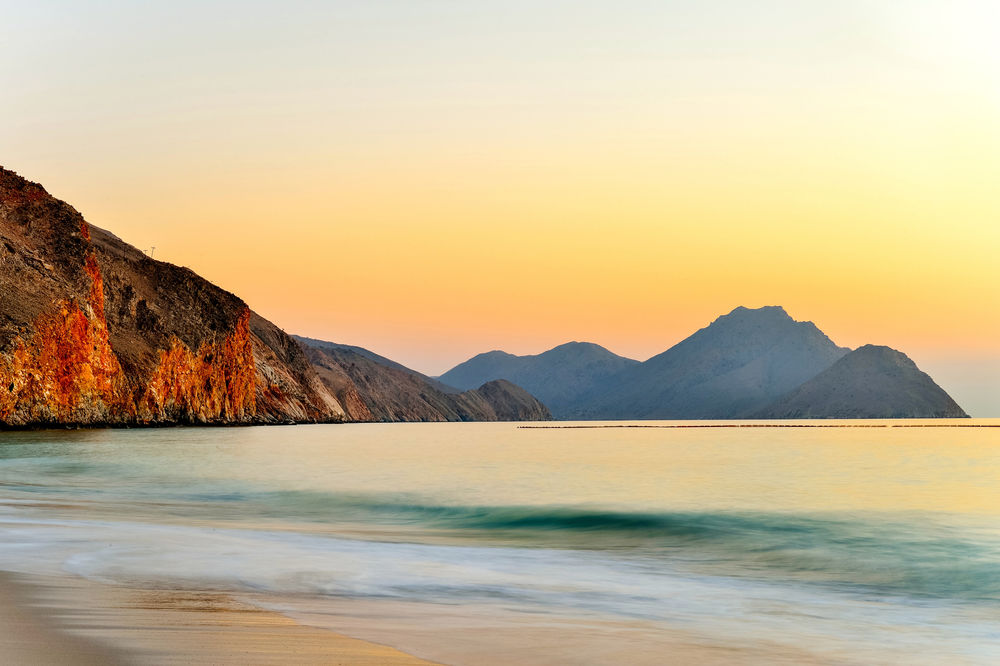To access the other concept sheets in the Tools in Geography unit, consult the See Also section.
Physical geography is the study of the various components of the Earth's surface. In the high school geography program, there are three of these components that are particularly important, namely relief, hydrography and climate.
Hydrography is an important element in the study of different territories, since it plays a role in the establishment and development of human territories. Indeed, the first human settlements often took place near watercourses.
Hydrography represents all watercourses and bodies of water (lakes, rivers, seas, oceans).
Bodies of water include oceans, seas, lakes and rivers.
-
An ocean is a huge expanse of salt water located between two continents.
-
A sea is a large body of salt water, smaller and shallower than an ocean.
-
A gulf is a place where the sea advances inland. A gulf is larger than a bay.
-
A bay is a place where the sea advances inland. A bay is smaller than a gulf.
-
A cove is a shallow bay.
-
A lake is a body of water that is generally fresh, may vary in area and lies inland.
-
A river is a waterway that empties into another waterway.
-
A stream is a very small watercourse.

-
An island is a stretch of land completely surrounded by water.
-
An archipelago is a collection of islands.
-
A peninsula is an area of land projecting out into a body of water.
The difference between the two is surface area. An ocean is always larger than a sea.
Here is an example using the smallest ocean and the largest sea on the planet.
| Arctic Ocean | Arabian Sea (Sea of Oman) |
|---|---|
|
12 millions km2 |
3,6 millions km2 |
Data sources: GEO, 2021[1]; Kandel and Pinot, n.d.[2] |
|
Comparing the two surface areas, we can see that the Arctic Ocean is larger than the Arabian Sea by more than 8 million square kilometres.

The Arabian Sea lies to the northeast of the Indian Ocean.
Source : Max Earey, Shutterstock.com
To access the rest of the unit, consult the Tools in Geography concept sheet.
1. GEO. (2021, February 19). Quelle est la différence entre la mer et l’océan? https://www.geo.fr/environnement/quelle-est-la-difference-entre-la-mer-et-locean-203261
2. Kandel, R., Pinot, J.-P. (n.d.). Arctique océan. In Encyclopédie Universalis. https://www.universalis.fr/encyclopedie/ocean-arctique/